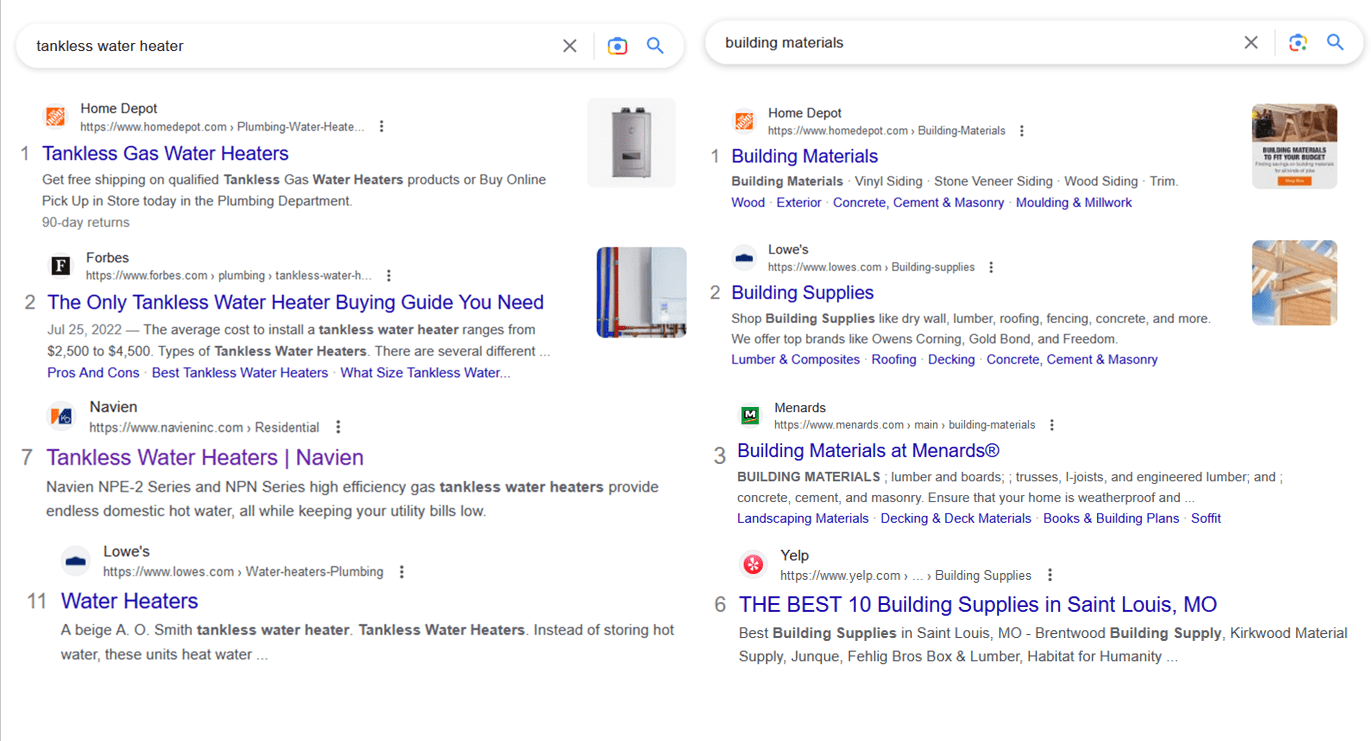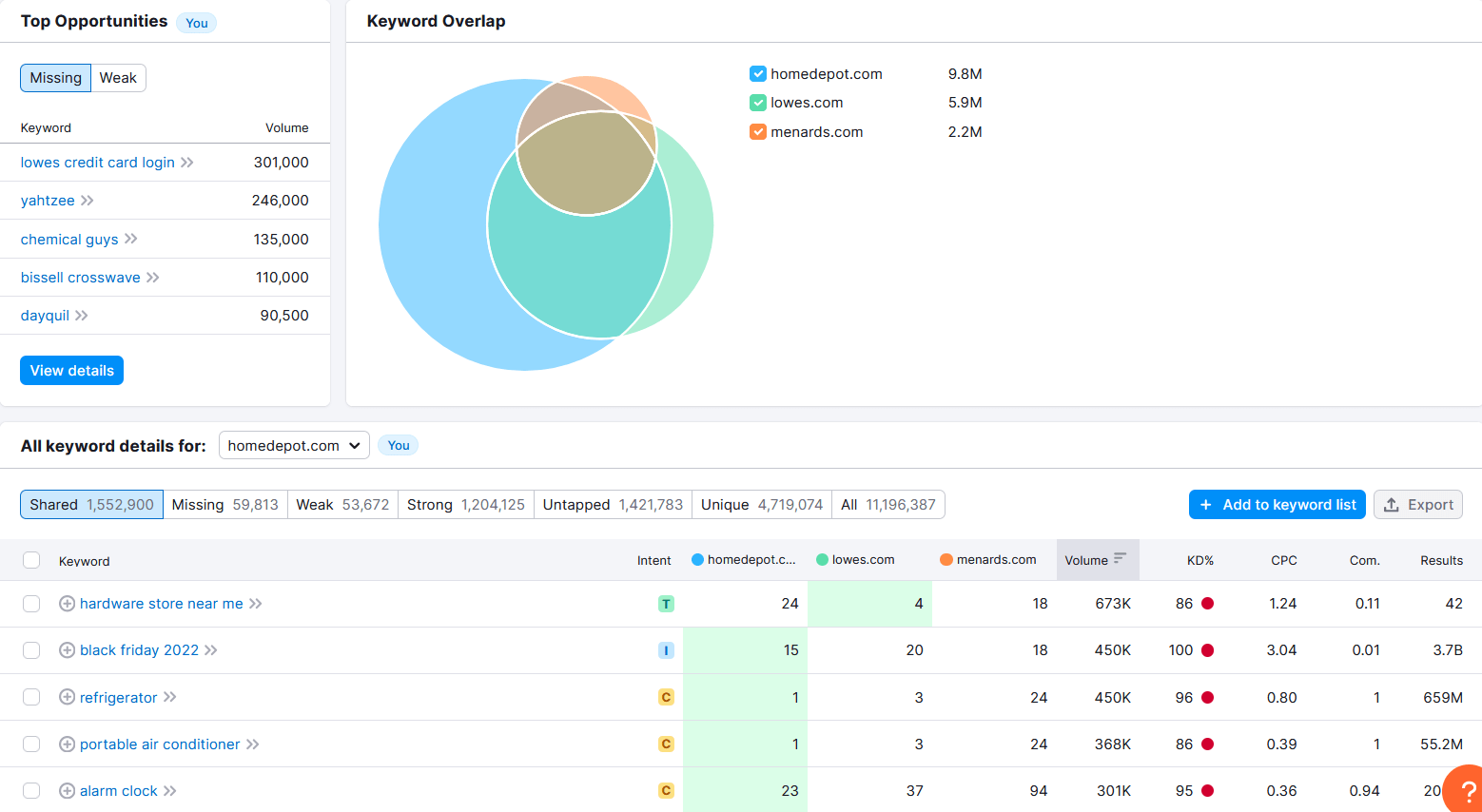Everyone wants to keep up with the Joneses. (And in the digital marketing space, most people want to beat them, too!)
In this comprehensive article, we’re diving into competitor analysis and strategy in one critical area of digital marketing: SEO.
Here's everything we'll cover with this guide. Use the below links to jump to each section!
- Identifying Your SEO Competitors
- The SEO Competitor Analysis Process
- Importance of Continuous Competitor Analysis in SEO
Now let's get into it!
What is SEO Competitor Analysis: Overview and Benefits
Competitor analysis is the process of analyzing the strengths and weaknesses of your competitors' online presence to gain insight into their SEO strategies and identify opportunities for improvement in your own SEO efforts.
Benefits of competitor analysis in SEO include:
- Benchmarking your performance: Understand how you are performing compared to your peers
- Identifying keyword gaps: Identify potential gaps in your keyword targeting and discover new opportunities that may have been overlooked.
- Learning from your competitors' successes and failures: Understand what’s working and what isn’t so you can better allocate resources.
- Staying up to date with industry trends: Stay ahead of the curve in terms of your own content and marketing efforts.
Identifying Your SEO Competitors
I'm sure a few companies come to mind when you consider who your competitors are. But when it comes to SEO, you may be competing against companies and sites that aren't even on your radar.
So first, we must identify our SEO competition.
To do this properly we will need to understand the different types of competitors you’ll find in organic search results.
The types of competitors to consider in your analysis include:
- Direct Competitors: These are businesses that offer the same products or services as you do and compete for the same target audience. Direct competitors are the most obvious and often the easiest to identify, as they are likely to appear on the same SERPs as your website for a significant portion of your keywords.
- Indirect Competitors: These are businesses that offer products or services that are similar to yours, but not identical. They may not be in the same industry or niche as you, but they compete for the same target audience. For example, a business that sells yoga mats may consider a fitness equipment store an indirect competitor.
- Organic Competitors: These are websites that rank for the same keywords as your website but may not necessarily offer the same products or services as you. Examples include blogs about similar topics or affiliate websites.
Now that we understand the different types of competitors, we can start researching who our competitors are. There are 2 primary ways to find your SEO competitors.
Searching Google
One of the most straightforward ways to identify competitors is to simply search Google for your primary keywords and take note of which sites are regularly featured in the top 10 positions (page 1) for each word or phrase.
When doing this sort of manual research, it will be important to search in an incognito window to avoid Google tailoring the results based on your previous web activity, or other personal user data.

In the example images above, I am researching competitors for Home Depot. I’ve searched a couple of their primary keywords, “tankless water heater” and “building materials.”
For tankless water heaters, we can see Forbes.com is ranking second with an article--this is a great example of an organic competitor.
We also see Navieninc.com, which is a water heater company, and an example of an indirect competitor. Then, interestingly, we don’t see a direct competitor until position 11, with Lowes.com.
For “building materials” we see a lot more direct competitors in the top spots with Lowe’s and Menards in positions 2 and 3 then Yelp, a common organic competitor, in position 6.
SEO Tools
The second primary way to find SEO competitors is with SEO tools such as SEMrush or Ahrefs.
These tools will analyze the keywords that you are currently ranking for and identify other websites that you are frequently competing with.
Below, I have a screenshot from the SEO tool Ahrefs where I’ve simply entered Home Depot’s website and asked it to find the top competitors.
I have found that the results tools give in this particular exercise are often less helpful than manual research, but it still is usually worth giving a shot if you have access to these or similar tools.

The SEO Competitor Analysis Process
Now it’s time to get into the process.
SEO competitor analysis can typically be broken into 4 primary areas all of which can produce new or different SEO opportunities:
- Traffic and keyword analysis
- Content analysis
- Backlink profile analysis
- Website structure and design analysis
We’ll walk you through each area step-by-step.
Traffic & Keyword Analysis
After we've identified who our competitors are we can begin analyzing their traffic and drawing insights to inform our strategies.
For starters, we’ll want to find out which keywords our competitors are targeting, and which are bringing in the most traffic.
We can use SEO tools to determine approximately how much traffic the competitor's site is getting from each keyword they rank for in search results.
We’ll use SEMrush for this example, but most SEO tools have features to help you accomplish traffic and keyword analysis.

In the image above I again entered Home Depot’s website and 2 of the competitors, we identified in the previous exercise into Semrush’s Keyword Gap tool.
We can see how many keywords each site is ranking for, how much overlap there is between our keywords and our competitors, and keywords they are ranking for that we aren’t currently targeting.
We can also see which positions we are each ranking in for our respective keywords, each keyword’s estimated monthly search volume, and more.
This data can be exported into a spreadsheet so that we can begin to choose keywords we would like to investigate further.
You can see that we are working with huge data sets here and because of this there are likely to be large amounts of keywords that are irrelevant for our purposes. However, these tools do have a wide range of filtering functionalities to help you “trim fat.”
Content Analysis
Once we have an idea of the new or existing keywords we would like to begin targeting or improving our rankings for we will want to understand what type of content competitors are using to rank for these keywords.
For starters, we will want to manually review the pages on our competitor’s websites that are ranking for each keyword we are interested in targeting.
This’ll help us determine the primary types of content being leveraged.
For example, are they targeting the keyword with a blog article, product page, home page, or some other type of web page? What types of pages are mostly showing in search results when we Google that keyword?
This will help us understand not only our competitor’s winning strategy but what types of pages Google primarily thinks users want to see when they search for that keyword.
We can then begin to craft ideas on how we could create similar content on our website to target the keyword in a similar way.
An important note here is that we will always want to be thinking about how our page can bring more value to the user searching for this keyword than our competitor. This way we aren’t directly copying their strategy but iterating on it to outrank them.
On-page Optimization Strategy Analysis
Our content analysis can be taken a step further by focusing exclusively on the on-page optimizations our competitors have made to ensure they rank highly for the target keyword.
This will give us a deeper understanding of why Google is ranking them well for the keyword and what we can do to beat out their content for a top spot in SERPs.
Examples of on-page optimizations and factors we’ll want to examine include:
- Keyword density
- Metadata
- Content length
- External linking
- Internal linking
- Structured data
- Images
- Any additional tools, charts, or additional site functionality
Backlink Profile Analysis
Backlinks, or a hyperlink from another website to yours, are a critical ranking factor, and one of the hardest to control as they inherently rely on other websites and site owners.
One of the most helpful ways to begin to formulate a strategy on how to acquire more backlinks is through competitive analysis.
In other words, finding out which sites link to your competitors and why, in order to replicate their most powerful links.

Again, using SEO tools to assist us, the above image shows a screenshot of Lowes.com’s backlink profile from the Ahrefs SEO tool.
Looking at one of Home Depot’s competitors, we can get tons of important information from reports like these including the anchor texts being used for the links, which is the actual linked text and is an additional ranking factor; strength metrics of the linking website, and more.
By examining this data further, we can also start to understand how our competitor is acquiring links.
For example, we can see they have a link from Forbes.com, which we already know is making content in our niche, so perhaps we’ll want to see if there is an opportunity for us to get a similar link from Forbes.com.
We can also see that they have a link from Wikipedia, so it makes sense that we would also want to make sure that we have our own Wikipedia page and that it links to our website correctly.
Additionally, we can see that Lowe’s is getting links to their scholarship page, so if we also have a scholarship program we could reach out to the linking site and ask that they also link to our program page. Or perhaps we consider starting a scholarship program, if we don’t have one already, to gain some additional earned links and media attention.
While this example shows how to analyze a competitor's full backlink profile, if you are targeting a specific keyword, it would be beneficial to look at the backlink profile of the specific page ranking for the target keyword on your competitor's site.
Aside from giving you potential ideas on how to acquire new links, this will give you an idea of the amount and strength of links you will need to your competing page to be a contender in search results.
Website Structure and Design Analysis
Our last section of SEO competitor analysis involves analyzing competitors’ website structure and design.
When a competitor is ranking for significantly more keywords than you it is often the case that their website includes entire sections that yours may not.
For example, do most of your competitors have blogs, do they have dedicated pages for each of their different services, or even dedicated pages for all services in each of their individual service areas (for example plumbing services in Memphis, plumbing services in Nashville, etc...).
We’ll also want to look at which pages they are prioritizing in the main navigation and which pages are being prioritized with direct links in the content of their homepage and other important pages.
Lastly, we’ll want to note if competitors are incorporating tools, chatbots, or other functionality that offers a superior user experience to the degree that Google would clearly want to rank them over you.
Importance of Continuous Competitor Analysis in SEO
Finally, it's important to continue monitoring your competitors even after you've completed your initial competitor analysis in SEO.
By staying up-to-date with your competitors' strategies and adjusting your own strategy accordingly, you can maintain a competitive edge in search results and attract more visitors to your website.
We hope this guide gives you the tools you need to start researching your competitors and get that much closer to owning your niche.
Interested in some professional help? Feel free to reach out to learn more about how Liquid can help you analyze and outrank your competitors!

